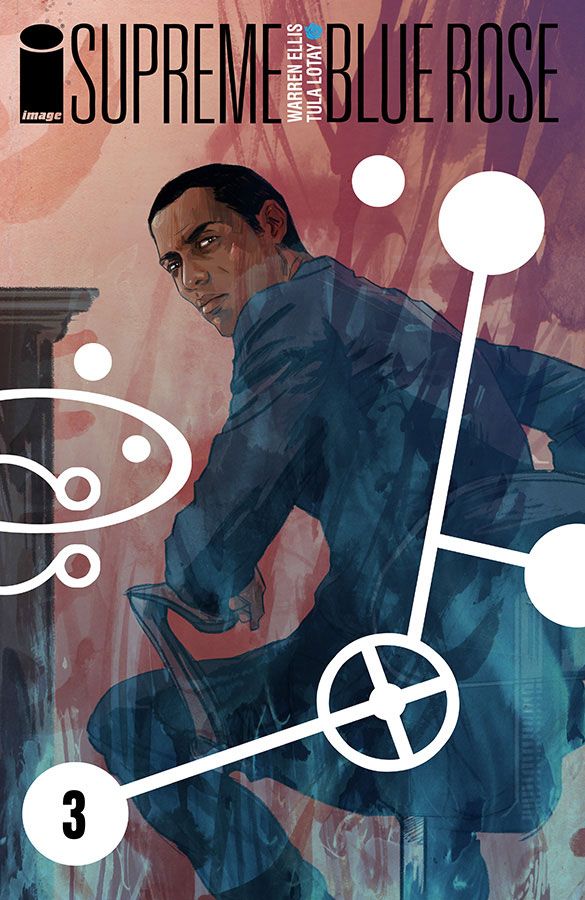"Supreme Blue Rose" #3 by Warren Ellis and Tula Lotay continues to have beautiful visuals and an increasingly metaphysical plot.
It's impressive that Ellis and Lotay are creating a dreamy postmodern story set in the "Supreme" universe that is so different from what has come before. Lotay's art makes it a beautiful world, but the plot has become exponentially denser in only three issues. The debut issue set up a concrete-seeming investigative journalism mission, but most of "Supreme Blue Rose" #3 occurs in places other than the surface of the known world. When Darius Dax is angry with the mysterious red-haired Zayla Zarn, he actually becomes the more sympathetic, since the reader, too, may be feeling frustrated with how Zayla speaks in riddles.
"Supreme Blue Rose" feels lush, and some of the richness comes from Ellis' delightfully unexpected use of the material of the "Supreme" universe, with new takes on the Allied Supermen of America and the League of Infinity members. His treatment of Professor Night reinvents the hero in a style that feels like Absurdist poetry.
However, the meaning of all this is still incomprehensible to even the best-informed reader. While the nonsensicality is charming in interludes like the "Professor Night" episodes, it tries the reader's patience when enigmas occupy so much of the main plot. Ellis has created an original atmosphere and feeling, but the plot is making slow progress.
The events of "Supreme Blue Rose" #3 are thought-provoking, but if Ellis' plot continues to become more impenetrable with its action and world-building, the comic is going to read like one dream after another, like a music video with no plot. This is not a positive development for a narrative medium. The debut issue was neatly balanced between the tangible and the intangible, but "Supreme Blue Rose" is veering too deeply, too early, into its own mythos, without having a solid foundation of characterization to lean on. Readers new to "Supreme" need more reason to care about what happens.
Lotay's art is still stunning. She's up to the challenge of all the surreal action and unearthly landscapes that Ellis' script demands. Her soft crayon-like line and her composition make the panels and pages flow like liquid. The landscapes that Diana passes in her car ride dream are beautiful. Lotay's sense of color is both distinctive and gorgeous. Her backgrounds are shot through with threads of canary blue, the color of the blue rose. The loose, painterly effect reinforces the feeling of madness and dreams. What's more, the blue is deliberately echoed almost everywhere, from the curvature of a whiskey glass to the design on Diana's t-shirt. Details like the roses on the path in Littlehaven or the pattern of the carpet in Diana's room are exquisitely rendered.
"Supreme Blue Rose" #3 continues the trend from issue #2. It's worth picking up for Lotay's art, but the reader doesn't get any solid answers about what's happening from Ellis. There's still plenty of time for explanations and concrete developments in the opening arc, though, and the originality of the storytelling approach may keep readers hooked until the plot gels.

